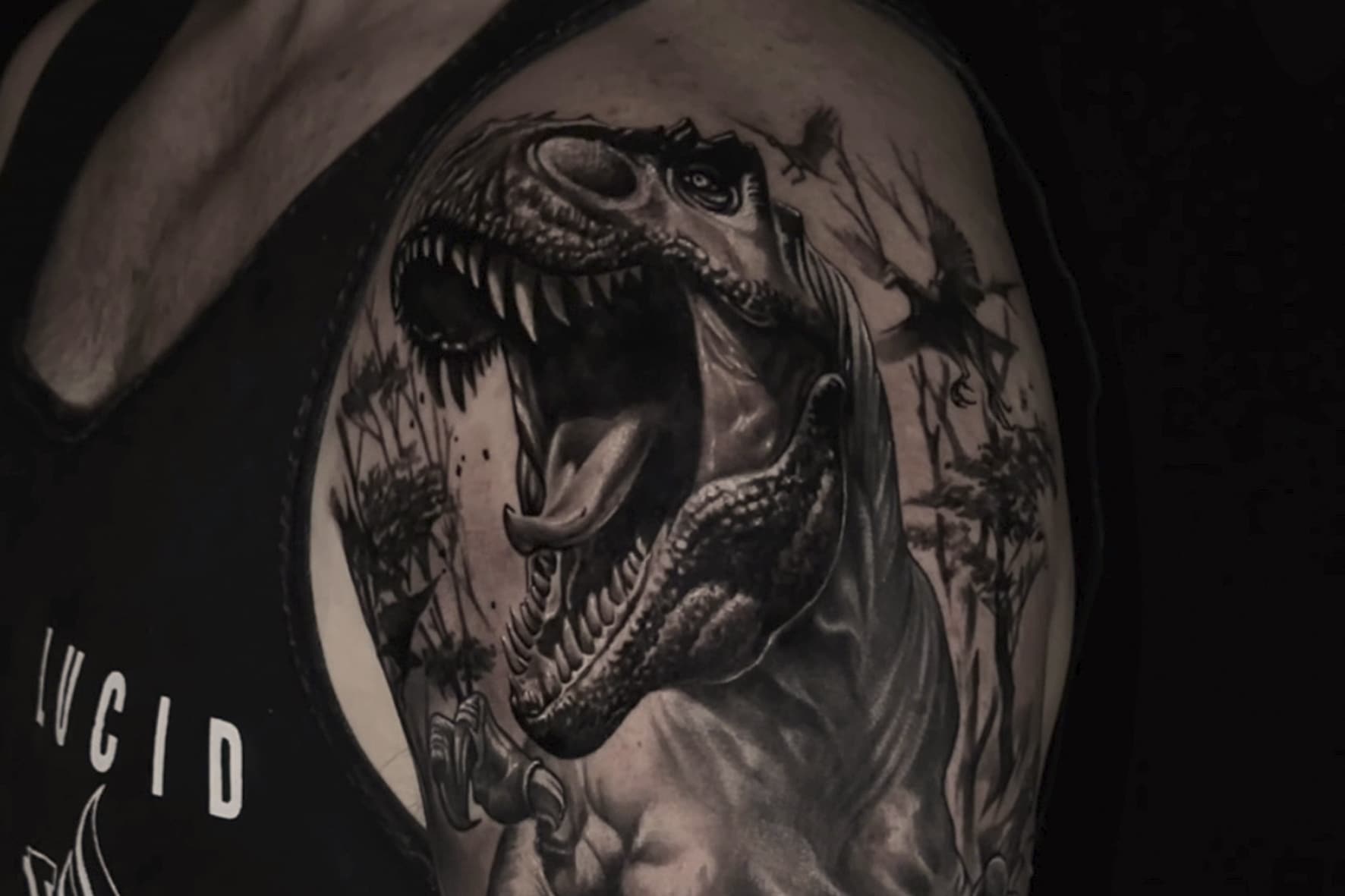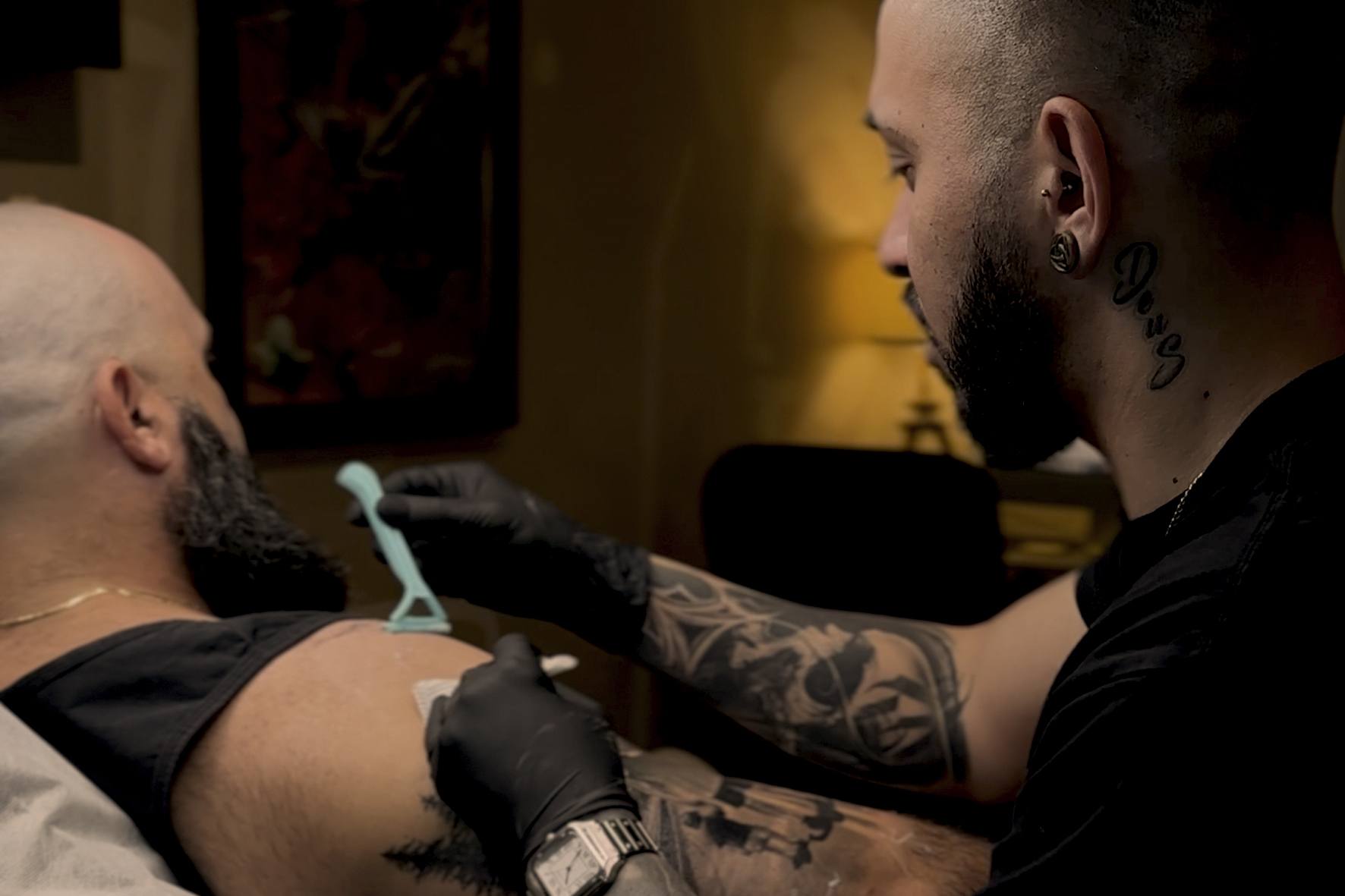The tattoo inflammation healing process is often misunderstood. Many people panic when they notice redness, swelling, or tenderness after getting a tattoo — but these are not signs of something going wrong. In fact, they’re all part of your body’s natural recovery process.
Just like a scrape or a burn, a tattoo is a controlled skin injury. Your body immediately reacts to that injury to protect itself, heal the skin, and — in the case of tattoos — help anchor the ink where it belongs.
In this guide, we’ll walk you through everything you need to know about how tattoo inflammation works, what to expect in each healing phase, which medications to avoid, and how to support your body in the most effective way.
What Is Tattoo Inflammation — and Why Does It Happen?
Inflammation is your body’s built-in alarm and repair system. It’s what happens every time your body detects damage — whether it’s from a cut, a bruise, an infection… or a tattoo.
When you get tattooed, thousands of tiny punctures are made in the skin to deposit pigment into the dermis, the second layer of your skin. This triggers your immune system to respond with a wave of healing activity — including the release of white blood cells, repair proteins, and chemical messengers called cytokines.
This process is called inflammatory response, and it’s not only normal — it’s absolutely essential for the tattoo to heal correctly and remain vibrant.
The 3 Stages of Tattoo Inflammation During Healing
Tattoo healing happens in three overlapping phases, each with a specific purpose and visual cues. Understanding what happens in each stage helps reduce anxiety and allows you to support your body’s work.
1. Inflammatory Phase (Day 0–7)
This phase begins immediately after the tattoo is finished and may last for up to a week. It’s often the most noticeable and uncomfortable — but completely expected.
What you may experience:
- Redness, swelling, and a warm sensation
- Slight oozing of lymphatic fluid or plasma
- Minor pain or soreness
- Sensitivity to touch
What’s happening inside:
- Vasodilation: Blood vessels expand to increase blood flow to the tattooed area.
- White blood cells (neutrophils and macrophages) flood the site to clean debris and prevent infection.
- Inflammatory mediators trigger tissue repair and begin building a clean environment for new skin to form.
Important: This phase “locks in” the ink into the dermis — making it one of the most important stages in the tattoo inflammation healing process.
2. Proliferative Phase (Day 4–14)
During this phase, the body shifts from defense to construction. It starts rebuilding the outer layer of skin (epidermis) and regenerating tissue.
What you may notice:
- Formation of light scabs or a thin film over the tattoo
- Itching (don’t scratch!)
- Tattoo may look faded, dry, or milky — this is normal
What’s happening internally:
- Fibroblasts produce collagen to rebuild the skin’s structure
- New skin cells form under the scabs
- Blood vessels start to regenerate and support healing
Avoid picking or removing any scabs — this can cause pigment loss, scarring, and even infection.
3. Maturation Phase (Week 2 to 6+ Months)
This final stage is subtle but essential. Many people believe their tattoo is fully healed after the scabs fall off — but beneath the surface, healing is still happening.
What you may notice:
- Tattoo becomes clearer and more defined
- Itchiness completely stops
- Skin tone around the tattoo evens out
What’s happening beneath the surface:
- Collagen fibers are rearranged and strengthened
- The skin becomes more elastic and durable
- Ink settles permanently into the dermis
⏳ Depending on your body, tattoo size, and location, this stage may last several months. The full tattoo appearance might not be final until 6 to 12 months.
Why You Should Avoid Anti-Inflammatories and Antibiotics
It’s natural to want relief from pain, swelling, or discomfort — but using medication without guidance may interfere with the healing process.
❌ Anti-inflammatories (like ibuprofen or diclofenac):
- Suppress the inflammation your body needs to heal
- May prevent white blood cells from doing their job
- Can lead to ink rejection, patchy healing, or color fading
❌ Antibiotics (unless prescribed by a doctor):
- Disrupt your skin’s natural microbiome
- May cause allergic reactions or excessive dryness
- Contribute to antibiotic resistance if misused
Important: Inflammation is not your enemy. It’s your ally. Let your body do its work unless a medical professional advises otherwise.
Safe Practices During the Tattoo Inflammation Healing Process
Here’s how to support healing without interfering with your body’s natural inflammation process:
| ✅ Do This | ❌ Avoid This |
|---|---|
| Wash your tattoo twice a day with lukewarm water and gentle soap | Using alcohol, hydrogen peroxide, or strong exfoliants |
| Apply a tattoo-safe healing ointment as directed | Over-moisturizing or suffocating the tattoo with thick layers |
| Let the skin breathe and rest | Wearing tight clothes that rub or cause friction |
| Stay hydrated and eat nutrient-rich foods | Smoking or drinking excessively (which weakens immune response) |
| Avoid sun, swimming pools, saunas, and heavy sweating | Intense workouts or exposure to dirty environments |
| Monitor for unusual signs like pus, fever, or spreading redness | Self-medicating without professional advice |
Trust the Process — Your Body Is a Healing Machine
It’s easy to panic when you see redness, swelling, or flaky skin. But remember: the tattoo inflammation healing process is not a sign of failure — it’s a system your body has mastered over thousands of years.
Every itch, every flake, every bit of sensitivity is part of something bigger: a biological masterpiece in motion.
When you support your body with patience, knowledge, and proper care, your tattoo will not only heal beautifully — it will last longer, look sharper, and stay vibrant for years to come.
Want to Go Deeper?
Learn how to care for your tattoo in each stage of healing with our complete tattoo aftercare guide.
Interested in large-scale black and grey realism tattoos? Explore our portfolio at www.washingtontattoo.com.au.
Final Thoughts: Inflammation Is the Foundation of a Beautiful Tattoo
Inflammation is not a complication — it’s a core step of the healing journey.
By respecting the tattoo inflammation healing process, avoiding harmful shortcuts, and giving your body the support it needs, you protect the investment you made in your skin — and allow the artwork to truly shine.
If you’re looking for a tattoo artist who values not just the aesthetic, but the science and biology of the healing process, visit us at Washington Tattoo. You’ll get more than a tattoo — you’ll get a long-lasting piece of art designed to stand the test of time.
📍 Book your consultation or explore our work at
🔗 www.washingtontattoo.com.au




